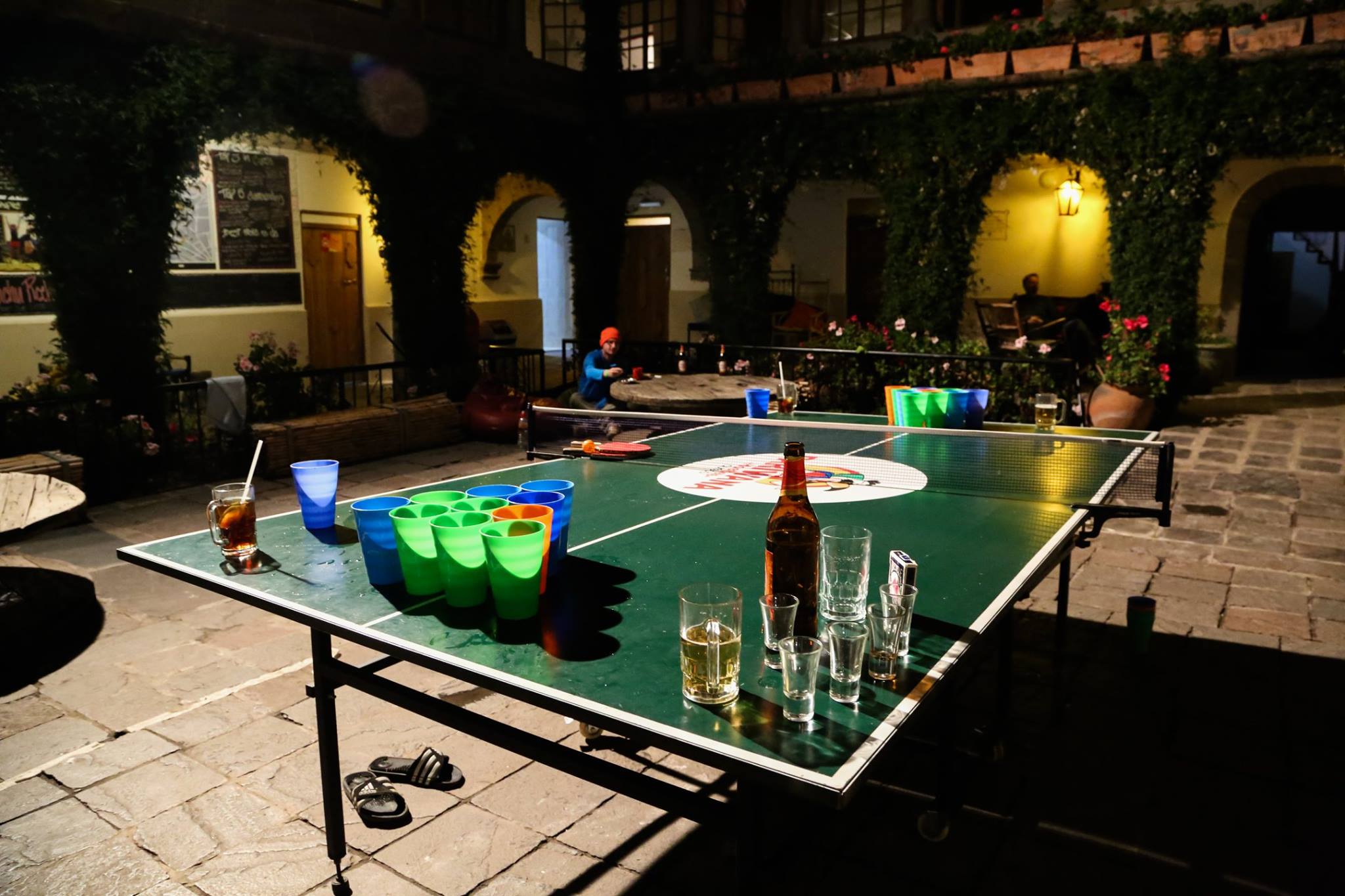
by George Gemelas
[divider]
[dropcap]I[/dropcap]n the historical district of Cusco, Pariwana Hostel sits along a side street. From the cobblestoned narrow street, it’s one step onto the Pariwana doorstep, through the tunneled entryway, and into the expanse of a Spanish courtyard—it’s there. It’s a grand Spanish zona, a house for the Spanish nobility of the colonial era. To American eyes, it’s a mansion. The floor is worn stone. Guests and towels peek over the iron railings at the activity of the yard below. Columns hold up the second floor to allow a stream of guest to flow through. Vines cover doorways. Pink geraniums bloom in terracotta pots. The cusqueño sun evaporates the nippy cold of the Andean nights. Pariwana was unmistakably an abode for the most noble of nobility.
However, Pariwana is no longer fit for nobility. The daily 3:00 PM Andean rain showers match the daily inundations of the Top 40 playlist. 3:00 PM or 3:00 AM—the music always plays. The walls, once white, have seen purer days, when the ownership did not plaster bright red lettering, blackboards, and cartoons onto them. Royal chairs sag as neon beanbags are draped in sunburnt Americans. The wifi password is partywanna. The back of the staff’s shirts state, “Champagne lifestyle on a beer budget.”
[aesop_image img=”https://live-tyglobalist.pantheonsite.io/wp-content/uploads/2016/06/Pariwana-2.jpg” align=”left” lightbox=”on” captionposition=”left”]
The clientele of Pariwana isn’t nobility, either. The most common pastime of many of the large armed, thick chested men is ping pong. Ping. Pong. Ping. Pong. Ping. Pong. Tongues , heavy with the musk of Pisco, stumble over discussions of alpaca shopping, llama snaps, and beer pong tournaments. When the whole town rallied and paraded for the annual Catholic holiday of Corpus Christi, the tanning and ponging and pisco sour sipping continued. Peru, for these partywannas, is a text, a snap, a pic. Cusco? Check.
But tourism done right is not just a pic and a check. Cusco was the capital of the Inca Empire, the pinnacle of South American society. Spanish colonization led to a new era of jaunted indigenous and European melding. The Inca compiled and built upon the developments of previous South American civilizations. Their masonry rivals the precision of modern day techniques. Metallurgy reaped gold and silver breastplates, bracelets, and crowns. Imperial cohesion drew itself from the reciprocity, generosity, and swift, strong hand of the Inca rulers. To this rich history, little awe is given.
When I walk into the courtyard of Pariwana, I may not be surrounded by nobility, but I could aim for a noble sort of touring. A noble tourist ventures to hope to learn and understand where the people of Peru have come from, who they are, and where they are going. They submit their own biases and aim to take in the perspectives and ways of life of others. This is incompatible with solely indulging in a champagne lifestyle.
On the bus ride back to Ollataytambo, near Cusco, I filled the hour conversing with the driver, Frederico. He was 20, had been done with high school for years, disliked friends, laughed easily, spoke quechua with his grandparents, couldn’t imagine himself getting married (even around the typical marrying age of 30), and ate quinoa. Alber, our horseback riding guide, was in his second year of high school, went to school from 6 to 10 PM, rested from work on Sundays, didn’t take naps while indulging in four hours of sleep, smiled often, ran fast, knew the mountains like the back of his hand. My interactions with Federico and Alber mark off not a check on my checklist in Peru, but rather sketch impressions of what its humans are actually like.. Peru is more than a collection of tourist attractions; it is a country of people whose cultural heritage makes modernity seem infantile. Before I log into the wifi at Pariwana, I stop, look out, disconnect. Pariwana, Peru—you’re more than just a pic.